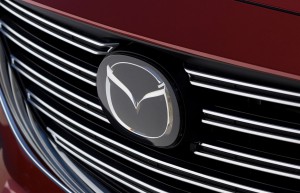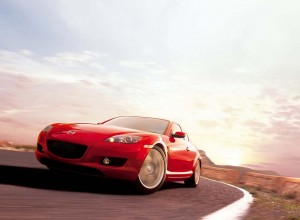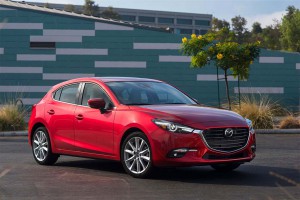
Mazda is bringing back the Wankel. The famous rotary engine will be used as a range extender in the maker's new battery-electric car.
After years of trying to find a way to meet tough global emissions and mileage regulations, Mazda officials have apparently given up on plans to bring back the Wankel engine perhaps known for its use in sports cars like the RX-7 and RX-8 – but the rotary isn’t dead and buried.
Several senior Mazda sources have now revealed that the Wankel will make its return under the hood of the Japanese automaker’s first battery-electric vehicle. If that has you scratching your head, the explanation is simple: the rotary will serve as a range-extender for the EV Mazda is expected to launch sometime in 2019.
It’s the same approach that BMW is using for a range-extender for its little city car, the i3 REx, albeit with a rotary, rather than conventional piston engine. Once the batteries are drained, the Wankel will fire up to keep the car rolling until the driver can stop for a recharge.
The range-extender approach is somewhat different from a plug-in hybrid in several ways. First, the vehicle is expected to run solely in electric mode unless and until the batteries are drained. And, even then, the internal combustion engine serves solely as a generator, providing power to drive the vehicle’s electric motor. It never delivers torque directly to the wheels.
(Mazda aiming to be first with breakthrough HCCI engine. Click Here for the story.)
Such an approach would be the best application of the rotary, observers suggest. The engine simply isn’t very efficient when operating in the constantly changing power demand cycles of a conventional automobile. But it becomes for more efficient when running at a relatively steady speed, as happens with a generator.
Both performance and economy are possible with rotary,” Matsuhiro Tanaka, the maker’s European head of R&D, told Britain’s Auto Express magazine. “It’s very stable and quiet at standard revolutions, so some potential exists for that.”
The range-extender approach, like more conventional plug-in hybrids, is a compromise, but it reflects the fact that most motorists tend to drive relatively short distances on a day-to-day basis, only occasionally needing to go more than 70 miles or so. So, providing enough energy for, say, 200 miles of range means lugging around hundreds of pounds of extra batteries for a 30-mile daily commute.
(Click Here for details about Mazda diesel plans.)
Exactly what vehicle Mazda will resort to is uncertain, though Mazda showed off a rotary range-extender prototype based on the little Mazda2 as far back as 2013. One possibility is something along the size of a European Smart Forfour model.
“A small car is best for an EV because bigger vehicles get too heavy with bigger batteries, and that doesn’t make sense for Mazda,” said Tanaka.
The European engineer echoed comments made by other executives in recent months, while many have been talking on background, global R&D chief Kiyoshi Fujiwara hinted at a rotary range-extended EV late last year.
Mazda has been slow to embrace electrification, company executives insisting that their SkyActiv technology is nearly as efficient as conventional hybrids but at far less cost. But the maker is facing a series of obstacles forcing it to electrify, including stricter U.S., Japanese and European mileage standards, as well as China zero-emissions mandates intended to promote the switch to battery power.
(Mazda sees red with new CX-5. Click Here for the story.)
For the Japanese home market, the Hiroshima-based automaker recently launched a hybrid version of the Mazda3 using a drivetrain borrowed from alliance partner Toyota. Other models are expected to share that system in the near future, as well.


